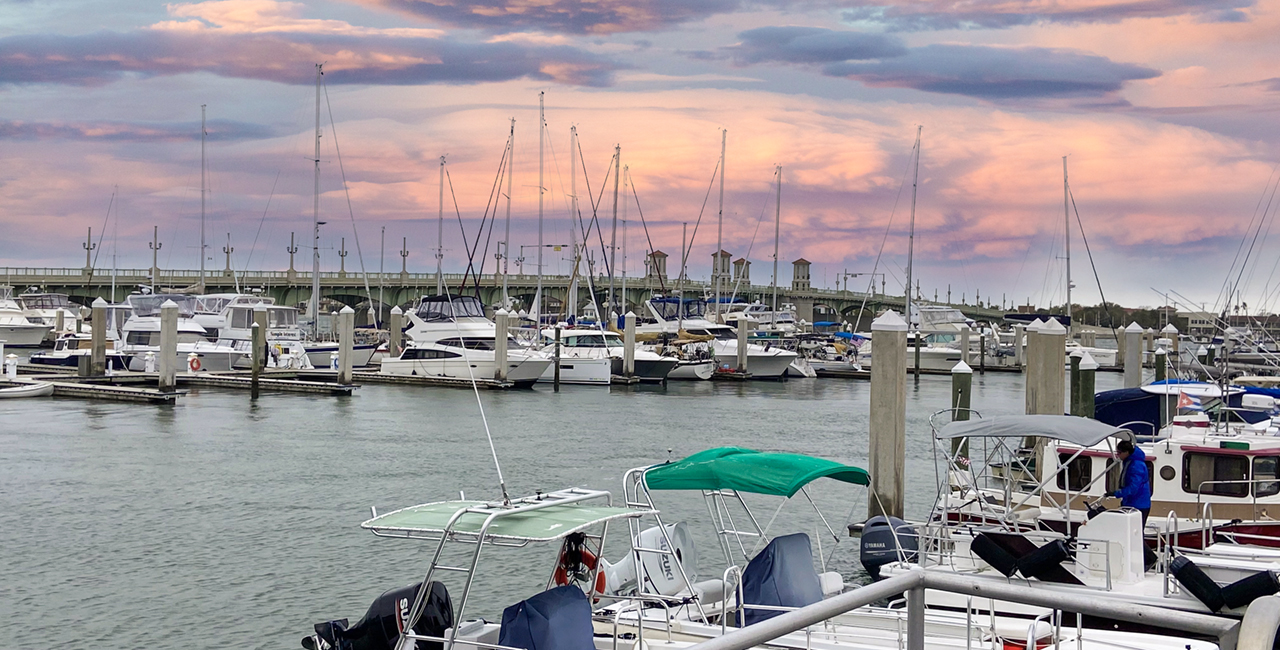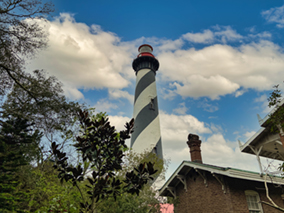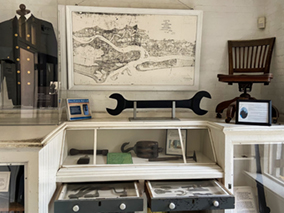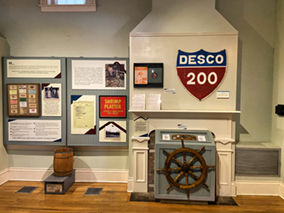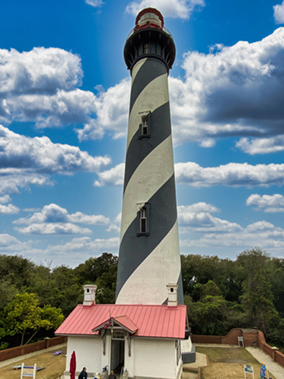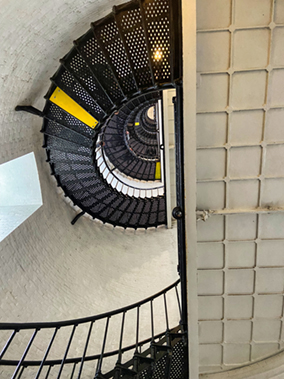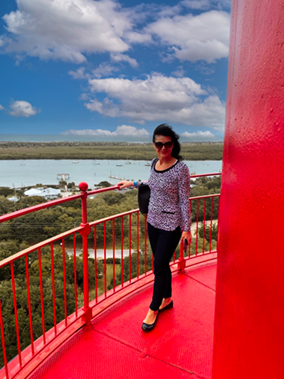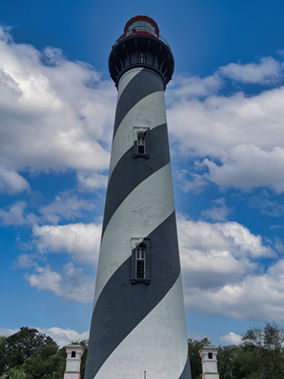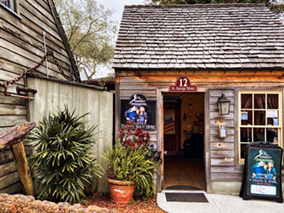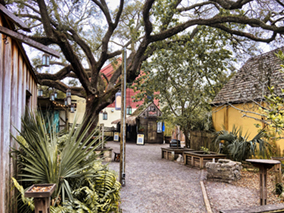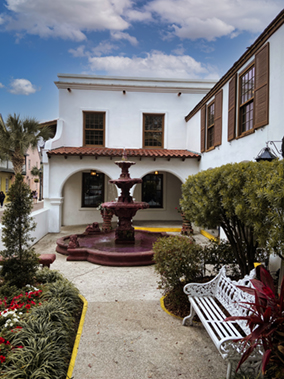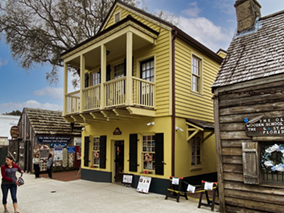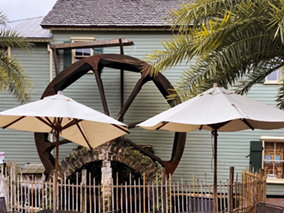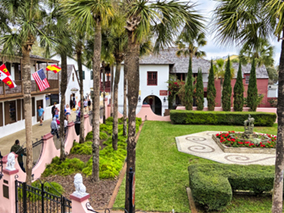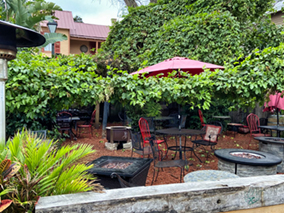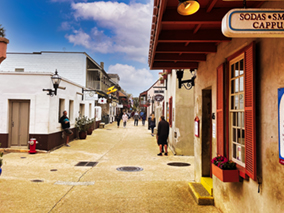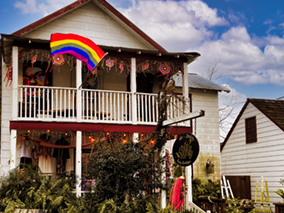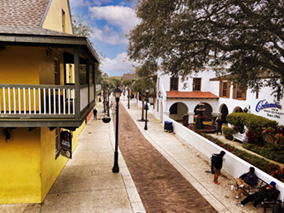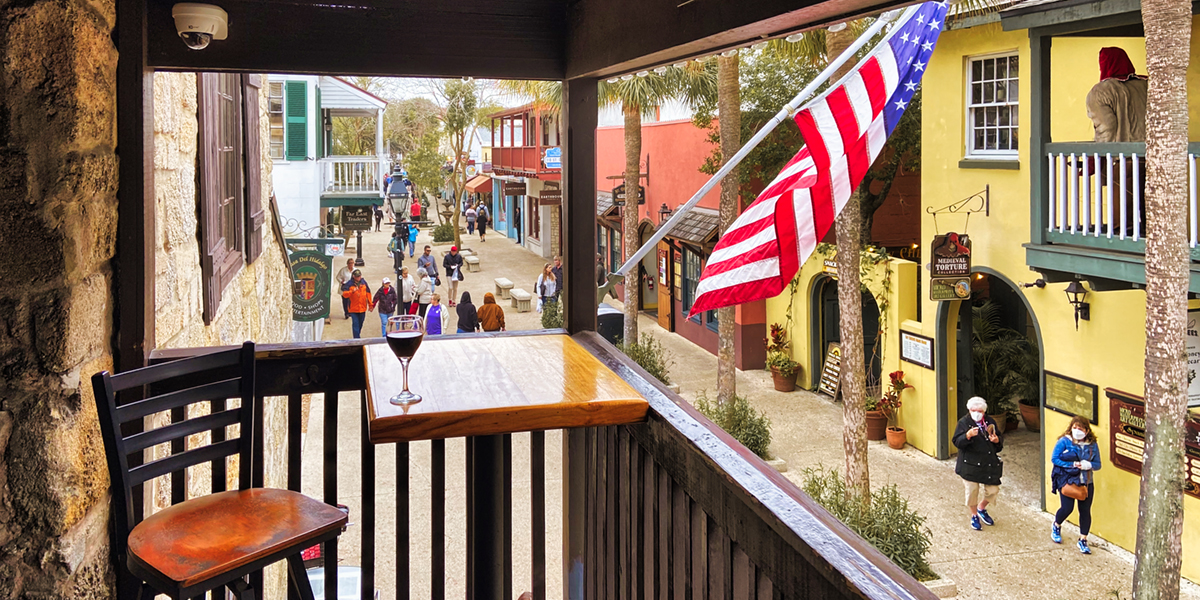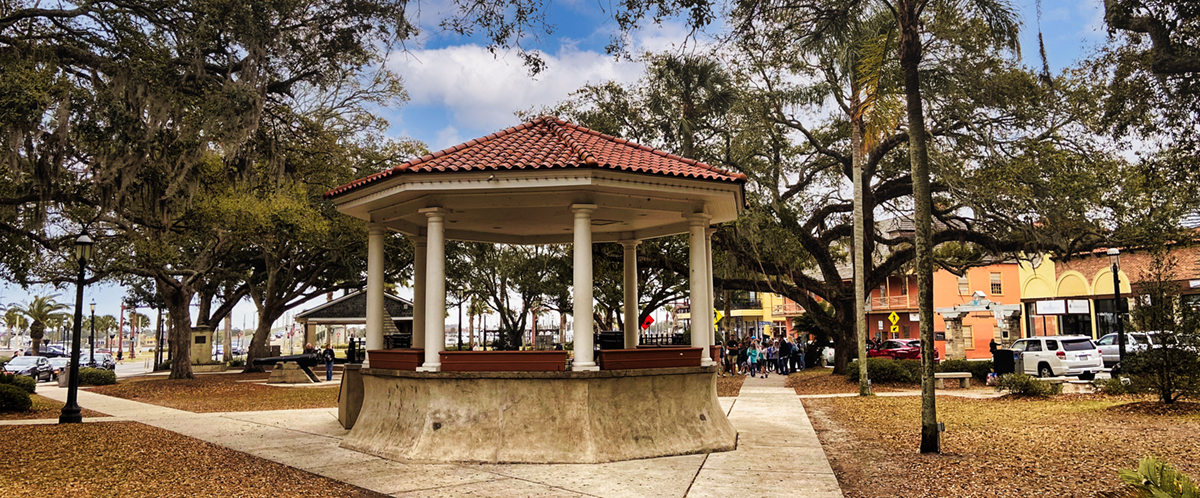

St. Augustine, Florida
St. Augustine is a city on the northeast coast of Florida. It lays claim to being the oldest city in the U.S., and is known for its Spanish colonial architecture as well as Atlantic Ocean beaches like sandy St. Augustine Beach and tranquil Crescent Beach. Anastasia State Park is a protected wildlife sanctuary. The Castillo de San Marcos is a 17th century Spanish stone fortress with views of the St. Augustine Inlet.
The City was Founded by Pedro Menéndez de Avilés in 1565 and it’s the Oldest Continuously-Inhabited Settlement established by Europeans in the Continental United States.

The first Spanish settlement successfully established in Florida, it was also the most important city in the region for almost three centuries. The location of the settlement was chosen by the Spanish because it was easy to defend and there was an easily accessible source of fresh water.
St. Augustine Lighthouse & Maritime Museum
...is a private-aid to navigation and an active, working lighthouse in St. Augustine, Florida. The current lighthouse stands at the north end of Anastasia Island and was built between 1871 and 1874. The tower is the second lighthouse tower in St. Augustine, the first being lit officially by the American territorial government in May 1824 as Florida’s first lighthouse. However, both the Spanish and the British governments operated a major aid to navigation here including a series of wooden watch towers and beacons dating from 1565. The current lighthouse tower, original first-order Fresnel Lens and the Light Station grounds are owned by the St. Augustine Lighthouse & Maritime Museum, Inc., a not-for-profit maritime museum. The museum is open to the public 360 days a year. Admission fees support continued preservation of the lighthouse and five other historic structures.
Colonial Quarter
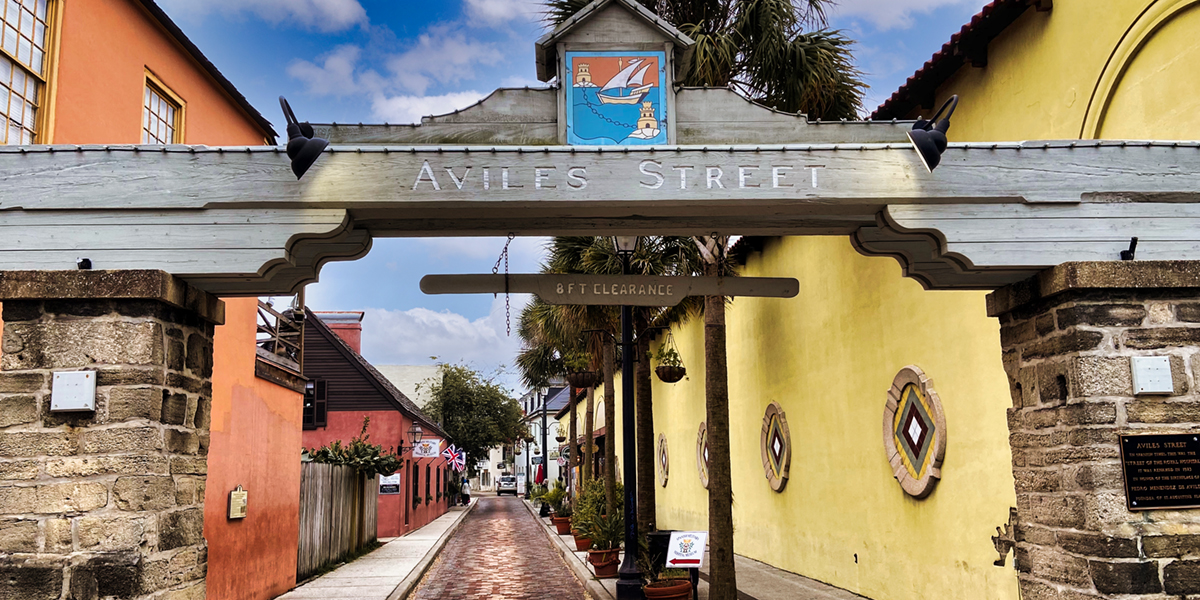
The Colonial Quarter is where visitors can experience hundreds of years of Colonial Spanish and British living history in St. Augustine. This two-acre revamped attraction takes vacationers and locals back in time through three centuries of the formation and creation of the nation's oldest city. Travelers can enjoy a Historic Adventure Tour with a resident of Colonial Quarter St. Augustine as they are taken on an interactive, immersive journey through history.
In 1963 the Colonial Spanish Quarter was opened as a living museum depicting life in St Augustine in the 1740s. In the 1740s Spain ruled the area and St. Augustine was occupied mostly by persons born in Spain or of Spanish ancestry.
In St. Augustine’s early days, St. George Street was the main street, and today the thoroughfare is still considered the heart of the city. Here, visitors find historic attractions and some of the restaurants, galleries, bakeries and shops for which the city is famous.
Castillo de San Marcos
Built by the Spanish in St. Augustine to defend Florida and the Atlantic trade route, Castillo de San Marcos National Monument preserves the oldest masonry fortification in the continental United States and interprets more than 450 years of cultural intersections.

It was designed by the Spanish engineer Ignacio Daza, with construction beginning in 1672, 107 years after the city’s founding by Spanish Admiral and conquistador Pedro Menéndez de Avilés, when Florida was part of the Spanish Empire. The fort’s construction was ordered by Governor Francisco de la Guerra y de la Vega after a raid by the English privateer Robert Searles in 1668 that destroyed much of St. Augustine and damaged the existing wooden fort. Work proceeded under the administration of Guerra’s successor, Manuel de Cendoya in 1671, and the first coquina stones were laid in 1672. The construction of the core of the current fortress was completed in 1695, though it would undergo many alterations and renovations over the centuries.
Bridge of Lions
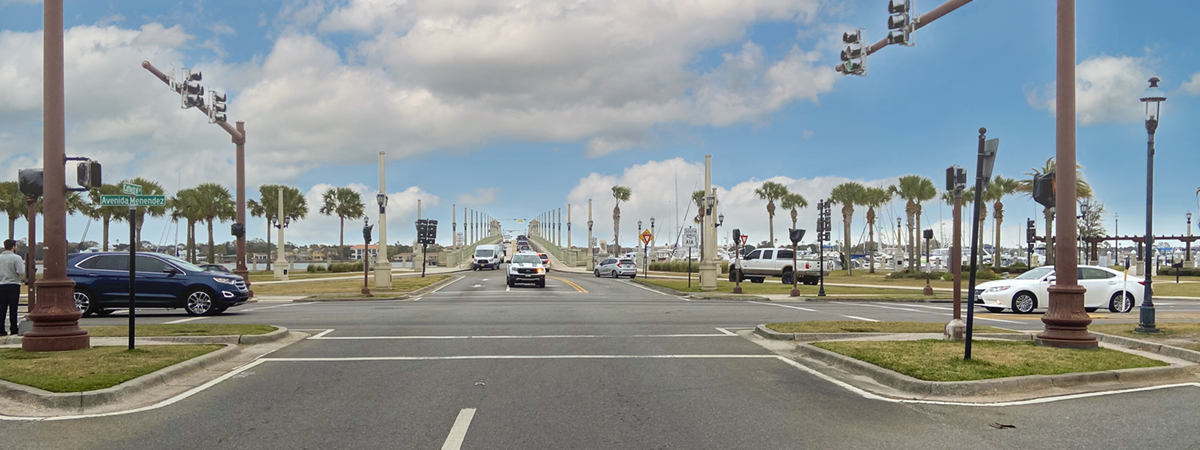
The Bridge of Lions is a double-leaf bascule bridge that spans the Intracoastal Waterway in St. Augustine, Florida, United States. A part of State Road A1A, it connects downtown St. Augustine to Anastasia Island across Matanzas Bay. A pair of copies of the marble Medici lions guard the bridge, begun in 1925 and completed in 1927. They were removed in February 2005 and returned in March 2011. Roads & Bridges magazine named the Bridge of Lions as fourth in the nation's top 10 bridges for 2010. Projects were evaluated based on size, community impact and challenges resolved. The United States Department of Transportation declared the bridge “structurally deficient and functionally obsolete” in 1999, prompting heated debates on what to do with the structure. A restoration plan was approved, but opponents continued to voice their opposition. Reynolds, Smith & Hills from nearby Jacksonville was awarded the engineering and design contract, estimated at $77 million, and projected to require five years to complete

For the end a few more memories from St Augustine....

